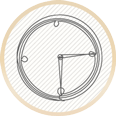Cheek Reduction Sydney (Buccal Fat Pad Reduction)
- Not covered by private health insurance or Medicare
- Day procedure only
- Cosmetic elective procedure
Cheek reduction surgery (buccal fat pad reduction) involves the removal of excess buccal fat pads, which are naturally occurring fat deposits located in the lower portion of the cheeks. By doing so, the procedure reduces excess volume in the cheeks.
If the procedure is performed alone, the incisions are made inside the mouth so there is no visible scar. Some patients combine a buccal fat pad reduction with a second surgery, such as a facelift, but this will differ for all patients.
The buccal fat pad is a large unit with mass in the temple, the cheek, and the pterygoid regions (back of the upper jaw). There is no need to remove the entire buccal fat pad; the cheek region is most frequently reduced. We always warn patients about total removal as it will slim the face, but a decade later can lead to significant volume loss in the cheeks. This means the procedure is only for some, and results can vary.
What happens at the first consultation?
Cosmetic surgery is a personal decision. During your first consultation, Dr Norris will focus on what you hope to achieve from the procedure and what you want your face to look like. After this, he will evaluate your face by assessing your skin tone, the condition of skin laxity around the cheeks, and the amount of fat tissue. He will also take photographs for your medical records.
Dr Norris will discuss how cheek reduction surgery is performed and where the incisions will be placed. You will then be provided with a detailed quotation outlining your surgery options. If you proceed with cheek reduction, Dr Norris will see you again for a second consultation.
Dr Norris insists that all patients must stop smoking for 2 months before undergoing any type of cosmetic surgery.
How is the cheek reduction operation done?
Dr Norris performs buccal fat pad removals in fully accredited medical facilities. You will be introduced to the anaesthetist with whom Dr Norris works closely, who will give you a general anaesthetic. The procedure can take up to an hour, depending on how much fat pads must be removed. Once a portion of the fat pads has been removed, sutures will be used to close the incisions. The sutures in your mouth are dissolvable; therefore, you will only come back to see Dr Norris to check on the swelling and bruising. You must eat soft foods for the first week, as the incision will cause discomfort.
Buccal fat pad reduction surgery produces permanent results, which will only be visible several months after the procedure. However, patients should be aware that the surgery won’t prevent the natural ageing process from taking effect. Additional procedures and products may be required later on
What happens after the cheek reduction (buccal fat pad reduction) surgery?
- The buccal fat pad reduction procedure takes about an hour to complete.
- You will need to spend around 4 hours in the hospital following the surgery before you will be discharged to recover at home.
- A friend or responsible adult must collect you from the hospital as you may not drive home due to the effects of the anaesthetic. You may also want someone to help you at home for the first day or two.
- You will leave with written cheek reduction post-operative instructions, a prescription for pain medication and an antibiotic if necessary.
- Short daily showers are permitted.
- The discomfort will peak within the first two days after cheek reduction surgery, but this can be managed with the prescribed pain medication. If, at any point, the pain increases, you will need to schedule an appointment with Dr Norris.
- You may also experience bruising, swelling, tenderness, and sensitivity. Swelling may vary from patient to patient and should resolve within three weeks.
- Light exercise, such as walking, is permitted after two weeks. Normal daily exercises can be resumed after six weeks, provided Dr Norris has cleared you for it.
- You can return to work after three days, depending on how you recover.
- A follow-up appointment will be booked for you on day 3 or 7 after the operation. This ensures the swelling is subsiding and the wounds are healing effectively.
Possible complications
- Haematoma A collection of blood in the wound area, which is either naturally absorbed into the body or sometimes requires further surgical drainage. Symptoms include swelling, pain, bruising, warmth, or itchy skin.
- Infection Infections may occur in the first three weeks after surgery and are treated immediately with antibiotics.
- Seroma A build-up of fluid after surgery that can sometimes require removal via a syringe.
How much does buccal fat removal cost in Sydney?
Since every patient needs to remove a specific amount of buccal fat, there’s no way to provide an exact estimate without a personalised buccal fat pad reduction consultation with Dr Norris. You will also need to consider hospital, anaesthetist and aftercare costs. Since this is a cosmetic procedure, it won’t be covered by Medicare or private health insurance.

Here at Form & Face, we provide patients with a
Lifetime followup guarantee
This means that we will be there for you far beyond the recovery period.
You can rest assured knowing that you can come to us about any
post-surgical concerns for the rest of your life.